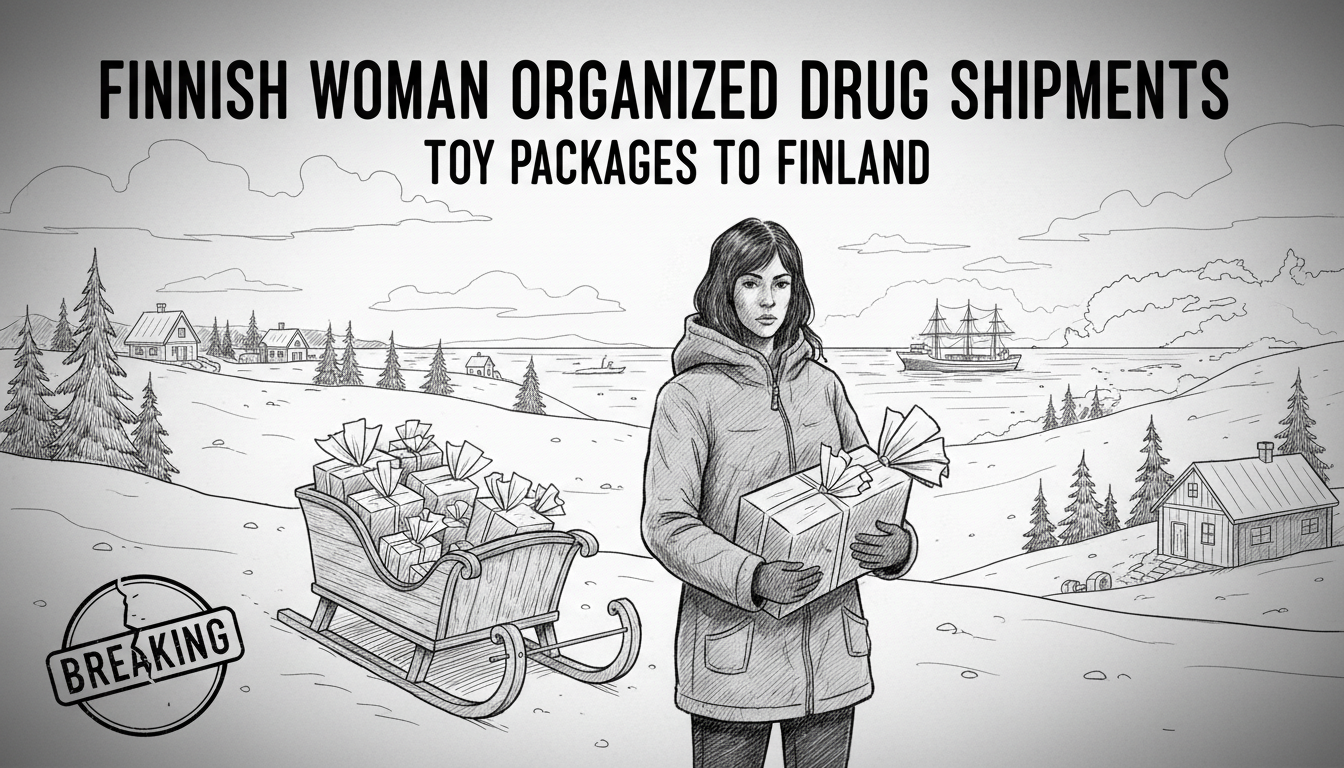Police in Finland have uncovered an international drug trafficking operation with a surprising concealment method. A Finnish woman allegedly organized shipments of marijuana hidden inside children's toy packages sent from Thailand to multiple locations in Finland. Authorities arrested the 1997-born suspect in Thailand during April, acting on a request from Finnish police.
The suspect remains in custody abroad while extradition proceedings continue. Police believe she masterminded the entire operation from Thailand, coordinating shipments to the coastal city of Rauma and other Finnish locations.
Investigators revealed the sophisticated smuggling techniques used in this case. Drug packages contained marijuana carefully concealed among legitimate items like toys, food products, and tools. One shipment even used a refrigerated container to transport the illegal substances.
Police identified a local accomplice residing in Rauma who assisted with receiving and distributing the drugs within Finland. The investigation has expanded to include over twenty suspects connected to the trafficking network.
The scale of this operation became clear as police disclosed the quantities involved. Between 2023 and 2024, the network imported between 100 and 150 kilograms of marijuana, approximately 20 kilograms of amphetamines, and about one kilogram of cocaine into Finland.
Despite these large import volumes, police managed to intercept only a fraction of the drugs. Authorities confiscated less than ten kilograms of marijuana and about four kilograms of amphetamines during various investigations across Finland.
Kimmo Lindholm, the lead investigator, provided context about the street value. "Based on average street prices, the drugs that reached the market were worth approximately three million euros," he stated in a police release.
This case highlights Finland's ongoing struggle with international drug trafficking networks. The country's geographical position makes it vulnerable to organized crime groups exploiting global shipping routes. Recent years have seen increasing sophistication in concealment methods, with criminals using everyday items to bypass customs inspections.
Finnish drug enforcement faces particular challenges with substances arriving from Southeast Asia. The region has become a major source for synthetic drugs and high-potency marijuana entering European markets. Police cooperation with international partners like Thai authorities has become crucial in combating these cross-border operations.
The investigation falls under the jurisdiction of Southwest Finland Police Department's Satakunta drug crime and organized crime unit. They have worked closely with Finnish Customs criminal prevention throughout the case.
Authorities expect to complete the preliminary investigation within coming weeks. The case will then proceed to prosecution consideration later this year. This timeline suggests Finnish officials are moving quickly to address what appears to be a substantial international drug operation with direct links to Finnish communities.
The use of toy packages represents a concerning evolution in smuggling tactics. It demonstrates how traffickers exploit innocent-looking shipments to bypass security measures. This method poses particular challenges for customs officials who must balance efficient trade with thorough inspections.
Local residents in Rauma expressed surprise that their community served as a hub for such extensive drug trafficking. The case has drawn attention to how even smaller Finnish cities can become targets for international criminal networks seeking distribution points.
Police continue to pursue leads in what they describe as one of the more sophisticated drug importation schemes uncovered recently. The combination of multiple drug types, international coordination, and creative concealment methods marks this as a significant case in Finland's ongoing efforts against organized crime.

